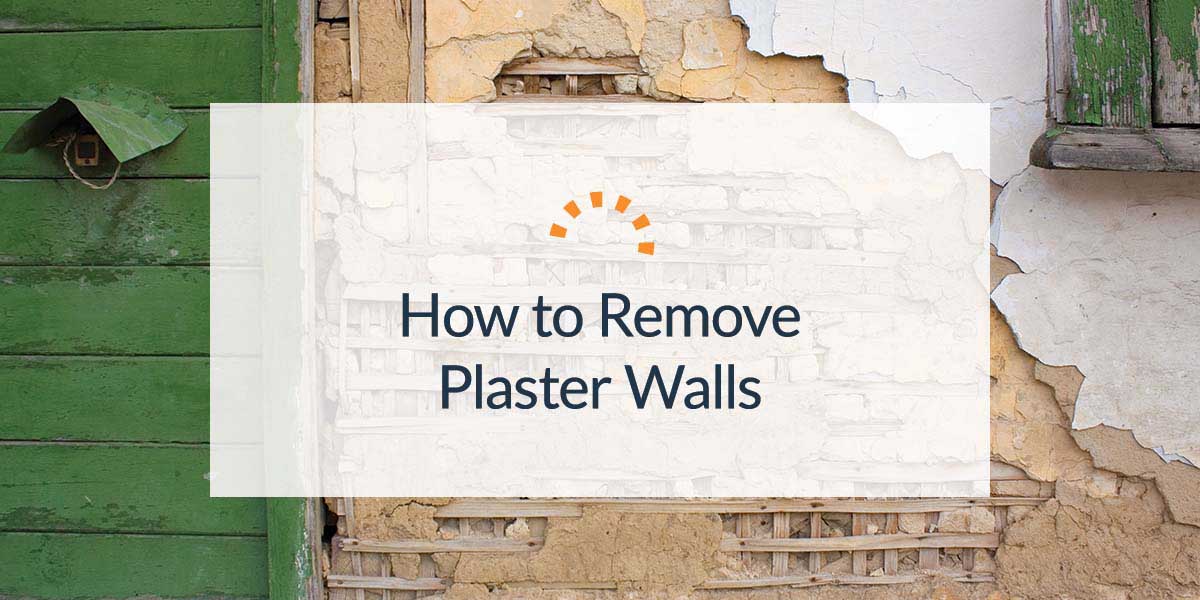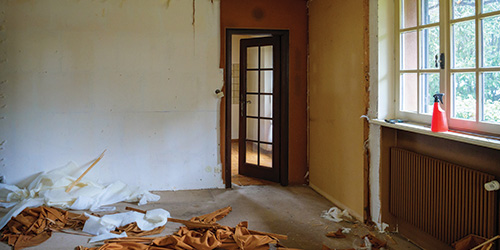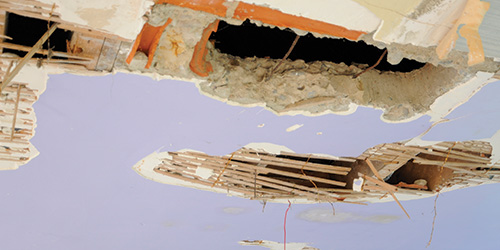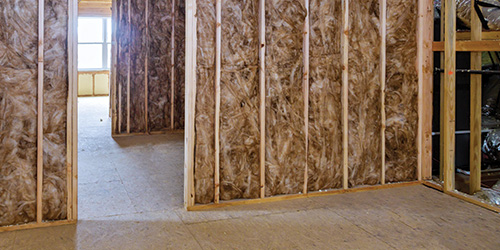
Plaster walls became less popular after drywall use exploded in the 1950s, but they’re still commonly found in older homes. You may want to get rid of crumbling plaster that hasn’t held up as your home settles, or maybe you need to install new electrical wiring or insulation. In any case, removing plaster is easy with the right tools and enough time.
Note that if your home is historical, you should consider repairing the plaster instead of tearing it down. If you decide to replace the plaster with drywall, be sure to get permission from local organizations as you would when making any major change to an old home.
PROJECT DIFFICULTY RATING: Intermediate
Steps for Replacing Plaster Walls
Once you’ve decided to replace your plaster walls, you’ll need to identify the wall studs, scrape away the plaster, pry off the lath, and remove your debris to clear the way for drywall installation. We’ll break it down step-by-step.

Before you get started, make sure that you have enough energy or extra hands to finish this job. Removing all the plaster in a room takes hours of work and cleanup. Have multiple people work with you if you aren’t at peak fitness.
To get the space ready, you’ll need to remove all the furniture you can from the room and store it in a safe place. If the room is large enough, you can move heavy items to the center and cover them with an old sheet or tarp to protect from debris.
Next, remove light fixtures, electrical plates and anything else that might be installed in the wall such as hooks, shelving or television mounts.
Once the room is clear, it’s time to get all the necessary supplies. Take a quick trip to your local home improvement store to find the items listed below.
Tool and Supply List |
|
|---|---|
|
|
|
|
|
The main safety concern of this project is dust from the plaster and interior of the wall; this is a very dusty and dirty job that will create a lot of debris. Everyone in the room should wear a respirator at all times and wear the safety gear listed above. Also, use heavy tools with caution.
It might be tempting to swing a sledgehammer at the wall, but if you’re trying to keep the framework intact, you’ll want to err on the side of caution and be a little more delicate.
Listen for the wall studs — the vertical wooden beams in the wall — by lightly knocking on the wall with a hammer. Then, use the hammer to bust holes in the parts of the plaster that aren’t supported by studs. If you’re having trouble listening for studs, you can buy a wall scanner to make your work easier.
Use a shovel to scrape off chunks of plaster. Some plaster might stick to the lath, but try to expose as much of the wood framework as possible. Make sure not to destroy the lath during this step. You’ll want to take apart the plaster and lath separately for an easier cleanup.
If your wall contains horse hair plaster, it’s likely very old, so the wall could crumble easily. Be careful, however, because this will likely result in more debris and a messier cleanup.
Get rid of any stuck chunks of plaster by knocking them free of the lath with a hammer or a scraping tool.
Pro Tip: If you’re working on this step with multiple people, give plenty of space between one another to safely use the hammer. You can also use a putty knife to more safely break off the remaining plaster.

With the plaster out of the way, you can now remove the lath that was supporting it. Use a hammer or pry bar to break and remove pieces of lath, starting with the horizontal strips.
Make sure to wear gloves during this stage to protect from loose nails or wood splinters. Also, be mindful not to remove or damage the studs. Even if the wall isn’t load-bearing, the studs should be preserved in order to act as a frame for insulation and drywall.
Next, get rid of any accumulated dust and dirt in the exposed wall, especially if you plan to install insulation. Some wall interiors are dirtier than others depending on the age of the home and how it was built. A large broom and dustpan could work for the majority of your debris, but if your wall is especially dusty or, if there are hard-to-reach spots, rent a shop-vac to simplify the process.
Pro Tip: Most areas do not accept remodeling debris as part of regular trash pickup. Fill a wheelbarrow or large garbage bin with loose materials as you work to keep your space clean, then load them in a roll off dumpster.

To get ready for drywall installation, you need to check that your studs aren’t damaged or bent. Use a straight edge to ensure that the walls aren’t more than a quarter-inch out of alignment, then re-nail or replace the studs before adding drywall.
If you don’t have time for the project or if you’re not physically able, consider hiring a trained crew. Professionals can get the job done quickly and thoroughly. Plus, they can check for asbestos and lead in the walls and paint. If you decide to check yourself, you can buy a lead testing kit at your local home improvement store or online.
The cost of professional plaster wall removal and replacement with drywall typically ranges from $1.60 to $3.80 per square foot. You’ll also need to factor in the costs of materials and disposal, which vary by location.
Lead-based paints weren’t banned for residential use until 1978. So, if your home was built before then, it is likely that there may be layers of lead-based paint on top of your plaster or asbestos heading beneath — which are both known to be toxic. Professional testing can be costly, but you can purchase testing kits for lead and asbestos at your local home improvement store to test yourself. It’s recommended to buy a few kits so you can test twice per area for the most accurate results.
Now that your old plaster is removed, it’s time to take the next steps to modernize your home. You might need to hire an electrician to rewire your old fixtures or install new insulation before putting up fresh drywall. Whatever project is coming up on your to-do list, we’re here to help you clear the way for what’s next.